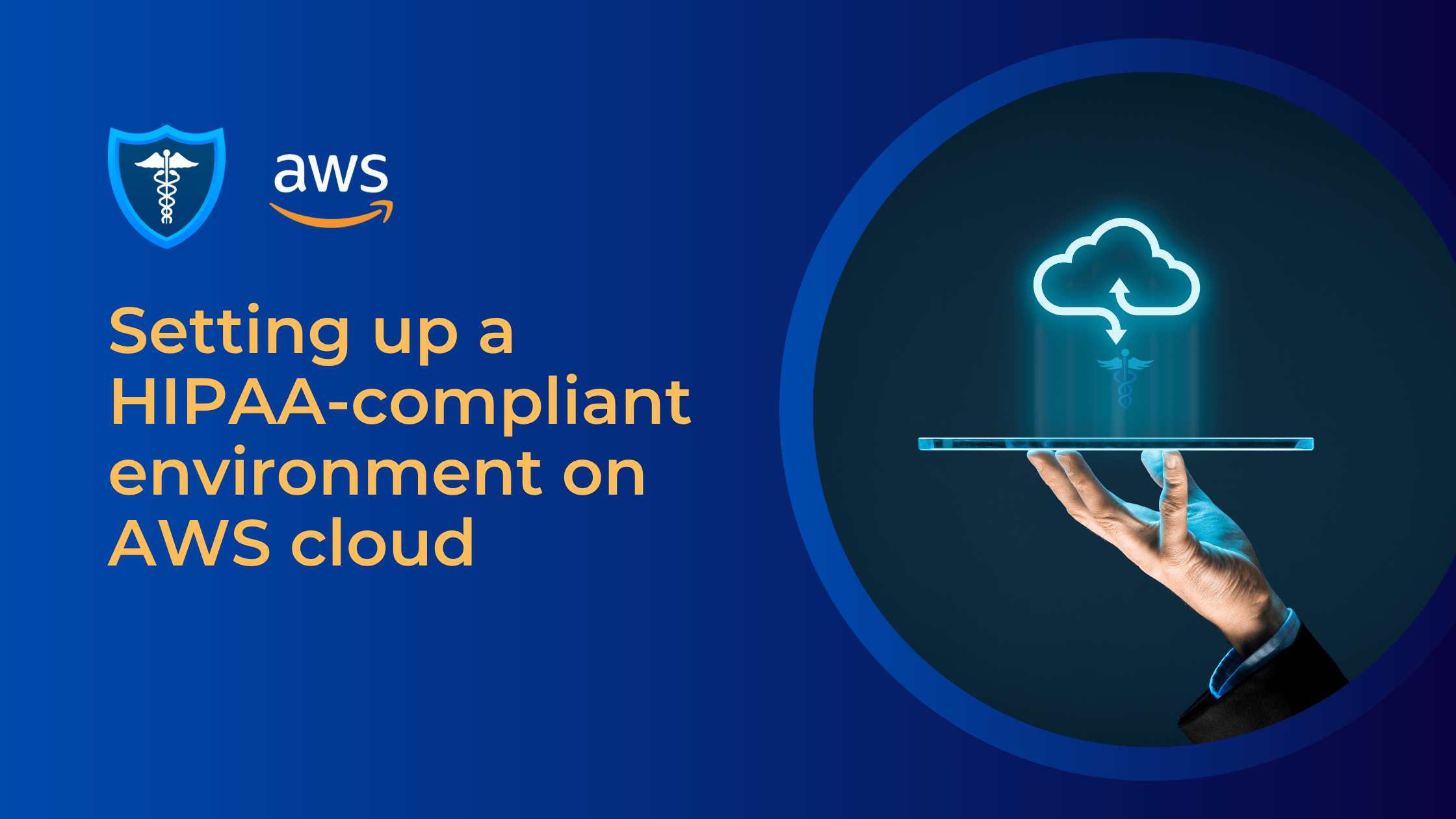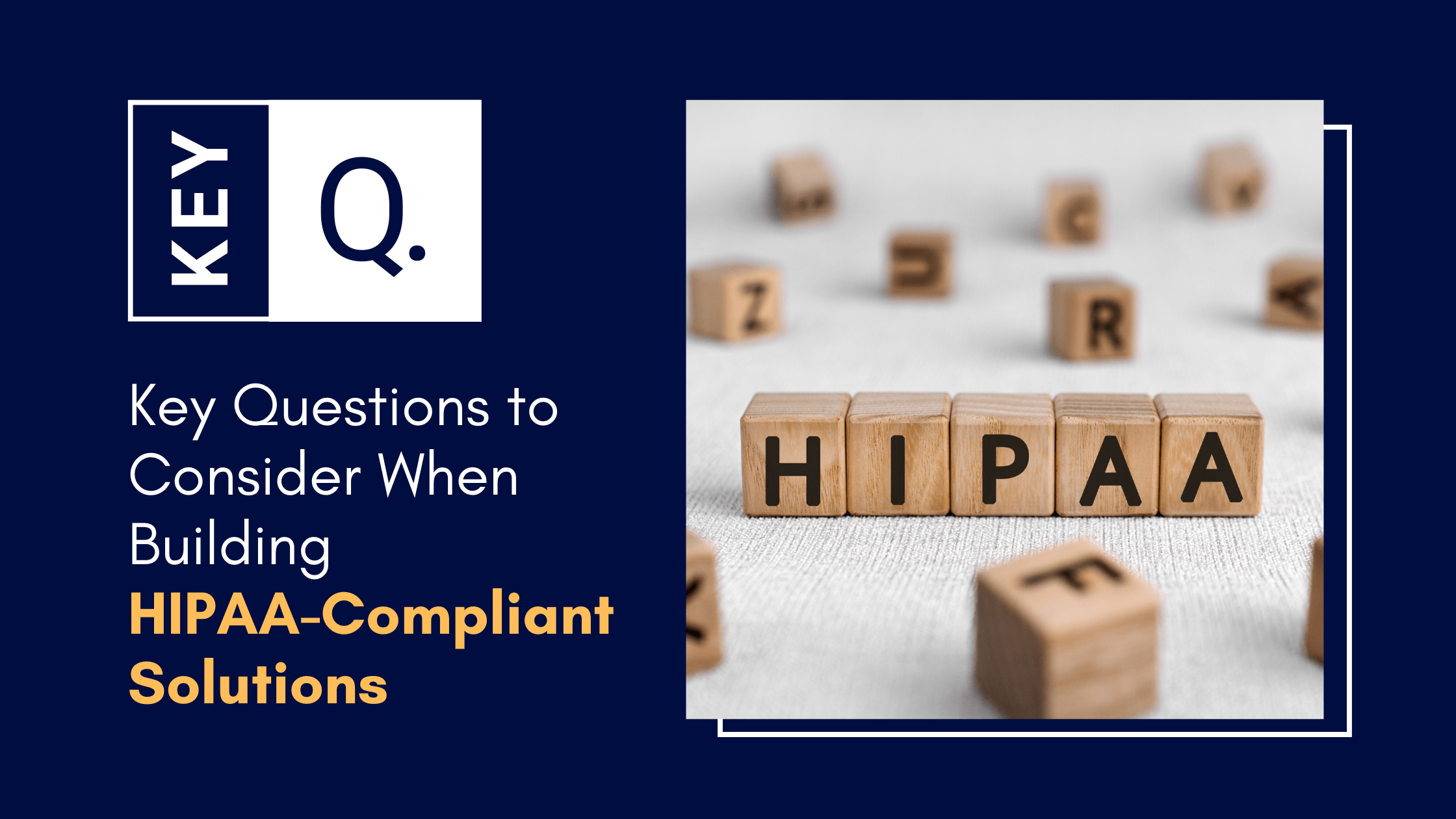
Summary: This blog post provides a step-by-step guide to setting up a HIPAA-compliant environment on AWS. It explains key HIPAA hosting requirements, outlines AWS tools that support compliance, and clarifies the shared responsibility between AWS and healthcare organizations.
Table of Contents
Introduction
Increasingly the healthcare industry is turning to cloud-based services to manage their IT infrastructure. The use of cloud storage not only improves operational efficiency, but equally in the case of providers like Amazon Web Services (AWS), offers a highly secure environment for the maintenance and retention of sensitive health information. This is crucial. Healthcare providers are legally obligated to store, process, and send Protected Health Information (PHI) in accordance with regulations set out by the Health Insurance Portability and Accountability Act 1996 (HIPAA).
AWS HIPAA-compliant cloud storage comes with an assortment of HIPAA Eligible services to support healthcare companies to develop scalable and secure HIPAA compliant solutions that serve an unlimited number of healthcare use cases. However, it is important to note, AWS, like any cloud platform provider, can only provide the opportunity for HIPAA compliance. It is up to the organization building a healthcare application to configure their instance in a HIPAA compliant manner.
The following post will explain how to set up a HIPAA-compliant environment on AWS, covering key security features, configuration best practices, and the shared responsibility model that governs cloud compliance.
What Is HIPAA-Compliant Hosting?
HIPAA-compliant hosting is a cloud or server environment configured to meet the security and privacy standards set by the HIPAA. It’s required for any system that stores, processes, or transmits electronic protected health information (ePHI).
To be compliant, the hosting environment must include safeguards such as data encryption, access controls and user authentication.
Simply using a cloud service isn’t enough—compliance depends on how the environment is configured and managed. Working with a trusted HIPAA compliant hosting provider helps ensure all requirements are met.
Learn more about – HIPAA Hosting Essentials: How to Keep Your Healthcare App Secure
Is AWS Cloud HIPAA Compliant?
AWS provides a hosting infrastructure that can operate as a HIPAA compliant cloud as long as it is used appropriately. The platform offers many layers of operational and physical security to protect the integrity and safety of ePHI, including physical hardware security controls.
But simple usage of the AWS cloud infrastructure and their covered services does not ensure HIPAA compliance. Any AWS-based system dealing with ePHI must follow HIPAA technical safeguards and regulations to ensure a fully compliant cloud environment.
Furthermore, although AWS will sign a Business Associate Agreement (BAA) with their customers, this does not shift liability for compliance to AWS. Instead, it outlines the responsibilities AWS assumes under HIPAA. Customers are still responsible for configuring their systems and applications to meet all HIPAA technical and administrative safeguards.
AWS also maintains a list of HIPAA-eligible services, such as Amazon EC2, S3, RDS, Lambda, and more. Only these services are covered under the BAA, so healthcare organizations must ensure they use eligible services when handling ePHI.
The Shared Responsibility Model
It’s important to understand that AWS HIPAA compliance is a shared responsibility. The AWS shared responsibility model is designed to increase the security level of Amazon’s cloud infrastructure. According to this model, Amazon is responsible for managing the security of their infrastructure running their services (including the hardware, software, networking and physical facilities), while customers must secure their data, configurations, and access controls.
Which cloud service they use will determine the level of configuration involved. For example, use of Amazon’s EC2 instance, obligates the customer to take responsibility for all required security configuration and management tasks.
Learn more about – Exploring Innovative HIPAA-Compliant Chat Options for Healthcare Communication
Guide to Configuring HIPAA Compliance on AWS
AWS provides many tools and features to help healthcare organizations using its services achieve HIPAA compliance. The HIPAA security rule provides a detailed description of the technical safeguards required to ensure the protection of patient PHI. Below are some best practices and AWS services to help:
1. Access Control requirements
Security access control (SAC) is an essential part of any system. According to HIPAA, the application should ensure that an authenticated user accesses only what they are authorized to and no more. AWS Identity and Access Management (IAM) is a key player in providing and controlling access to AWS. It involves the strategies and methods used to authenticate and allow actions that specific users can perform. IAM enables you to manage access to AWS services and resources securely. With its help, you can create and manage AWS users and groups, and use permissions to allow and deny their access to AWS resources.
2. Person or Entity Authentication requirements
The goal of authentication is to verify if the user is authorized to interact with your system. Secondly, authentication means collecting information on how the user is accessing the infrastructure. This means that a system must provide ways of identity verification to confirm the identity of the user attempting to access protected data.
Person or Entity Authentication in AWS-based HIPAA-compliance software is achieved by permissions. Each user needs to set their own unique password (the least requirements of which every AWS account owner can set). You can also make virtual or physical multi-factor authentication.
The U.S. Department of Health and Human Services offers four verification approaches to implement this rule:
- A biometric identification system;
- A password system;
- A personal identification number (PIN);
- A telephone callback or a “token” system that uses a physical device for user authentication.
A good practice is to implement the AWS Security Token Service (STS). It helps you to request temporary, limited-privilege credentials for AWS Identity and Access Management (IAM) users or for users that you authenticate (federated users).
3. Disposal as a Requirement
HIPAA requires that PHI be properly disposed of. AWS allows customers to manage data retention and securely delete data. Each account owner on AWS cloud has the ability to install and configure retention for all services used to prevent unnecessary data from being stored and to delete data from the service upon request. Any company that collects health information must ensure it is properly destroyed. HIPAA requires that media be cleared, purged, or destroyed consistent with NIST Special Publication 800-88, Guidelines for Media Sanitization, so that PHI cannot be retrieved.
4. Data Backup and Storage Implementation
HIPAA requires healthcare organizations to maintain retrievable, exact copies of ePHI and to have a plan for restoring data in case of loss or failure. AWS offers reliable HIPAA-compliant cloud backup services. AWS Backup is a managed, policy-based solution for automatic backup application data for all AWS services running both in the cloud and on-premises. It is a faster and easier backup solution for customers that can be set up on a regular basis or carried out on request. AWS Backup automates and centrally manages backups. It also monitors the status of current backups, searches/restores backups to ensure compliance with corporate and regulatory requirements. Most AWS services like RDS, Elasticache, and S3 have customizable native backup functionality.
5. Integrity as a Feature
To ensure the integrity of your personal information, AWS cloud provides you with robust data encryption options. Amazon S3 offers Server Side Encryption. Each object is encrypted with a unique key which is encrypted as well with a regularly rotated master key. Amazon S3 uses the strongest block cipher available – 256-bit Advanced Encryption Standard (AES-256).
6. Encryption and Decryption
Encryption is one of the most efficient security tools protecting data from unauthorized access. To encrypt PHI data, Amazon offers AWS KMS for applications and services running in the cloud. It is an ideal HIPAA compliant solution for managing encryption keys together with other AWS services. Master keys in AWS KMS can be used to encrypt/decrypt keys used for encrypting PHI in your applications or in AWS services. You can access AWS KMS within AWS Identity and Access Management or using the software. It offers centralized control over encryption keys to define user data. AWS KMS includes both management functions and Cryptographic functions.
7. Audit Controls
Auditing and monitoring controls are essential for software to meet HIPAA compliance requirements. For that purpose, Amazon introduced AWS Config. It is a fully managed service that provides you with AWS resource inventory, configuration history, and configuration change notifications to enable security and governance. The solution simplifies auditing, security analysis, change management, and operational troubleshooting.
The HIPAA cloud Security Rule requires covered entities to track login attempts and report errors. CloudTrail provides an event history of AWS account activity. It helps to identify log entries related to sign-ins, including the IP address and Multi-Factor authentication. CloudTrail also determines successful sign-ins by users in IAM and root. These features simplify operational analysis and troubleshooting.
8. Automatic Logout
HIPAA mandates that systems automatically terminate sessions after a period of inactivity to reduce unauthorized access risks. AWS supports this through configurable session timeouts in the AWS Management Console and through API operations like AssumeRole and GetFederationToken.
The AWS console allows setting the preferred AWS user session length in minutes. If you use one of the AssumeRole* API operations in your URL, you can include the SessionDuration HTTP parameter. This parameter specifies the duration of the console session, from 900 seconds (15 minutes) to 43200 seconds (12 hours).
If you use the GetFederationToken API operation in your URL, you can include the DurationSeconds parameter. This parameter specifies the duration of the federated console session. The value can range from 900 seconds (15 minutes) to 129,600 seconds (36 hours).
Learn more about – HIPAA Compliant Cloud Hosting: What does it mean?
Conclusion: Partnering with a HIPAA-Compliant Hosting Provider
Setting up a HIPAA-compliant environment in the cloud can be complex. While cloud platforms offer the tools and infrastructure, it’s your responsibility to configure, monitor, and maintain compliance across your entire application stack.
Working with an experienced HIPAA compliant hosting provider like QuickBlox can simplify the process. We specialize in supporting healthcare organizations with secure, scalable HIPAA hosting solutions.
As a backend communication platform offering secure chat, voice, video, and AI functionality, QuickBlox supports HIPAA compliant hosting on AWS and other cloud platforms. Our experience with healthcare clients ensures that we help you configure your instance correctly, apply the right safeguards, and meet HIPAA hosting requirements with confidence.
QuickBlox helps you:
- Deploy on your preferred cloud platform
- Implement key HIPAA safeguards (encryption, access controls, audit logging)
- Navigate compliance requirements with confidence
- Receive a signed Business Associate Agreement (BAA)
Our deep experience in healthcare and HIPAA compliance hosting ensures your application is built on a strong, secure foundation—ready for real-world use and regulatory scrutiny.
Contact us to learn how we can support your HIPAA hosting needs.
FAQs
What is AWS HIPAA compliance?
AWS HIPAA compliance refers to the ability to build and operate healthcare applications on AWS using services that meet HIPAA security requirements. AWS offers a set of HIPAA eligible services and signs a BAA with customers to support compliant configurations.
Which AWS services are HIPAA eligible?
AWS maintains a list of HIPAA eligible services, including Amazon EC2, S3, RDS, Lambda, and more. These services can be used to build secure, scalable healthcare apps within a HIPAA compliant environment.
Does using AWS guarantee HIPAA compliance?
No, using AWS alone does not guarantee HIPAA compliance. While AWS provides the infrastructure, it’s your responsibility to configure, monitor, and maintain a fully HIPAA compliant cloud hosting environment.
What is the shared responsibility model for AWS HIPAA hosting?
In AWS HIPAA hosting, AWS is responsible for securing the cloud infrastructure, while customers must configure access controls, encryption, logging, and other safeguards to meet HIPAA compliant hosting requirements.
Do I need a BAA to use AWS for healthcare apps?
Yes. A signed Business Associate Agreement (BAA) is required to use AWS HIPAA compliant services. AWS provides this agreement through AWS Artifact for eligible customers.
Can QuickBlox help with HIPAA hosting on AWS?
Yes. QuickBlox is a trusted HIPAA compliant hosting provider that helps healthcare organizations configure secure cloud environments using AWS HIPAA eligible services. We assist with deployment, compliance, and ongoing support.








